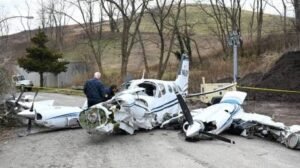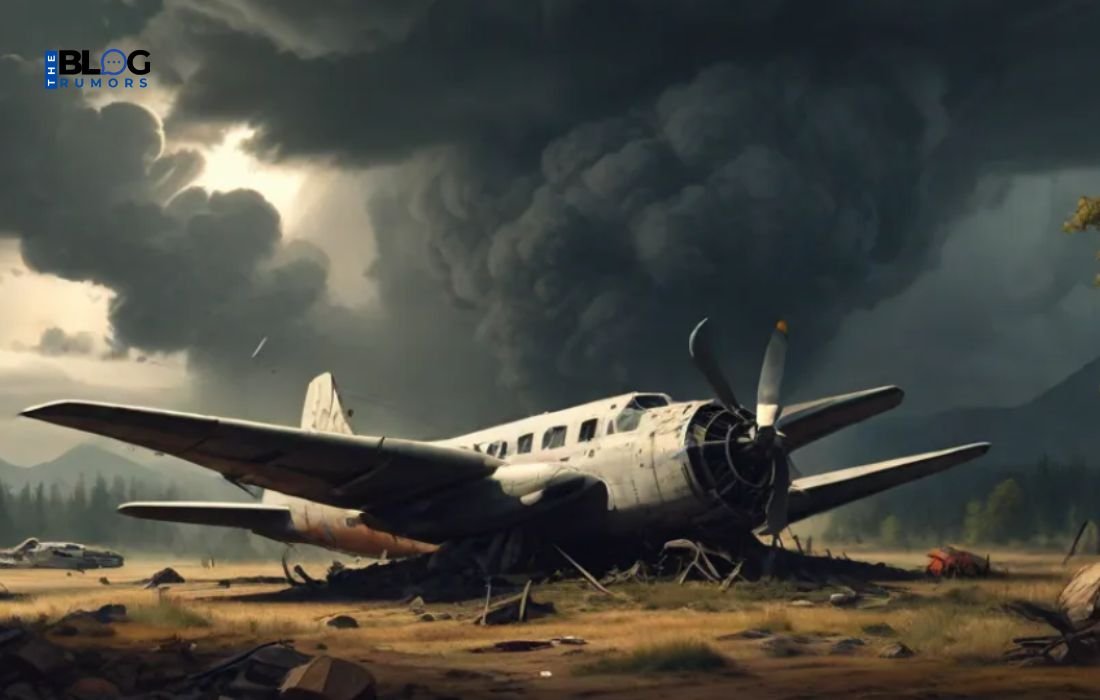Don Skagland’s story is both a story of hope and sorrow. A skilled pilot named Don Skagland was in a terrible plane crash that many people learned about and will never forget. His story has interested both flying fans and history buffs. When we look at this event, Don Skagland Plane Crash, we can see some of the risks and problems that pilots and the flying world face.
Who Was Don Skagland?
People knew Don Skagland as a committed and skilled pilot. From a very young age, it was clear that he loved flying. For years, he trained and practiced to get better. People who knew him knew how much he loved flying and how serious he was about safety. He was naturally good at something that made him stand out in the field. Skagland didn’t just fly for a living; it was his way of life. He was known as a confident and careful pilot, and he had a long history of good flights.
Background of the Plane Crash
A lot of things happened before the plane crash, and people are still studying them today. Aviation experts have looked at the facts to figure out what really happened. The plane that Skagland owned was well taken care of, and he had a history of flying safely. Still, the events of that terrible day made it so that even the most skilled pilot would have a hard time. The weather wasn’t great, which could have been a role. However, the exact cause is a combination of several things that made things difficult in the air.
The Flight Path and Initial Warnings
When the first signs of trouble showed up, Don Skagland was on a planned flight path. People who saw the plane say they heard strange sounds coming from it as it flew over certain places. It’s possible that Skagland saw signs that something wasn’t right and started fixing things. Early warnings are very important in aviation, and pilots are taught to move quickly. But Skagland’s plane seemed to be having more and more problems. The plane started acting in strange ways, which put Skagland in a very dangerous position.
Mechanical Complications and Pilot Reactions
One idea says that the plane may have had a technical problem. In flight, mechanical problems happen all the time, but when they happen at high altitudes, there is a lot at stake. Skagland would have had to act quickly to try to fix the problem and keep control of the plane. Pilots are taught what to do in an emergency, but there are times when even the most experienced pilots can’t handle what’s going on. Skagland tried a number of moves to get back in charge. Later probes found that he did these things to try to keep the flight stable.
Weather Conditions and Environmental Challenges
The weather is a very important part of airplane safety. Conditions that change, like turbulence, strong winds, and bad visibility, can make it hard for pilots to do their jobs. Skagland’s flight took place in weather that was not good at all. It was probably hard to control the flight because of sudden changes in temperature and wind speed. Problems with the environment can make it harder for pilots to make moves, which makes safe navigation more difficult. As Skagland tried to get used to his new surroundings, his skills would have been put to the test.

Also Read More: Unlocking Free Games
Eyewitness Accounts of the Crash
Several people who were there saw what happened right before the crash. Their stories have given us important information about what happened that day. Witnesses said they saw the plane moving all over the place before it finally went down. Some reports said that smoke was coming from the plane, which could mean that there was a problem with the mechanics. Accounts from eyewitnesses are often very important in flight investigations. They help figure out what happened by giving information from different points of view.
The Impact of the Crash
People who knew Don Skagland were deeply affected by the crash right away. His family, friends, and people in the aviation world were all very sad. For many, it was a frightening reminder of how dangerous flying can be. The flying business also paid attention, seeing this as a lesson to be learned. After the crash, people talked more about flight safety and procedures. The goal of aviation officials is to make safety standards better so that similar accidents don’t happen again.
Investigation and Analysis
Several agencies worked together to look into the crash. Experts looked at the flight path, the wreckage, and any data that had been taken from the flight. Every part of the plane’s condition and Skagland’s activities were carefully looked over. The main goal of the investigators was to find out if the crash was caused by a technical problem, a mistake made by the pilot, or a mix of both. The quest was to figure out the series of events that led to this terrible result. The results of their research would later help make flying safer.
Lessons Learned from the Crash
The aviation world learned a lot from this terrible event. More simulations of unexpected mechanical breakdowns started to be used in training programs. Pilots were told to practice what to do in an emergency, even if they didn’t think it would happen. The business world knew how important it was to do thorough repair checks. A lot of pilots saw this as a warning of how unpredictable flying is. Every thing we learned from the crash is now part of a bigger plan to make flying safer.
The Legacy of Don Skagland
People remember Don Skagland not only for the crash but also for what he did for flying. People who knew him were moved by how much he loved flying. People will always remember Skagland because of the lessons they learned from his tragic trip. People think of the tough times and guts that come with being a pilot when they hear his name. In the world of flight, Skagland stands for the bravery that pilots need to face the unknown. Even after the terrible event that killed him, he is still a valued person.
Aviation Safety Advancements Since the Crash
Since Skagland’s crash, a lot of progress has been made in aircraft technology and rules. Newer planes have more advanced features that are meant to handle emergencies. Pilot training now includes more thorough practice for what to do in an emergency. The event made it clear that communication methods between planes and ground control need to be improved. Modern planes also have better safety systems that can find problems early. As aviation changes, safety stays at the top of the list.
Public Reaction and Media Coverage
A lot of people heard about the plane crash in the news. A lot of news sites wrote about the story, which showed how dangerous it is for pilots. People’s interest in the crash led to conversations about how to make planes safer. A lot of people sent their thoughts to Skagland’s family. The media helped make people more aware of air safety, which led to more careful attention to flight procedures. This news brought problems in flight to the public’s attention, which made safety a bigger issue.
Family and Community Response
The death of Don Skagland was terrible for his family. They talked about their memories of him and thought about his life and what he had done. Skagland’s family got help from people in and outside of flight. People from work, friends, and even strangers reached out to offer their sympathy. An awful lot of people praised how strong the family was after the death. After a tragedy, people in the community often come together to help each other, and Skagland’s family found comfort in the help they received.
Reflections on Risk in Aviation
Pilots learn about the risks that come with their job from the very beginning. We are reminded by Don Skagland’s story of how skill and luck work together in the skies. As a pilot, you have to deal with a lot of challenges and risks all the time. The crash brings attention to how tough you have to be to become an airline pilot. For people who work in the field, it shows how important it is to be ready and respect the weather.
Conclusion
The story of Don Skagland’s plane crash is still a strong example of how complicated flying can be. His life and sad death show us both the beauty and danger of flying. From the time he first became interested in flying until the end of his life, Skagland’s legacy continues to encourage pilots and people who love flying. This event has made people more aware of aviation safety issues and led to changes in that area. Even though the crash was terrible, it led to improvements that will make flying better in the future.
FAQs
Who was Don Skagland?
It was clear that Don Skagland loved flying and was a very good pilot. His experience and dedication to safety won him respect among people who work in aviation.
What were the main causes of the crash?
The crash was probably caused by a mix of technical problems, bad weather, and maybe even other environmental factors.
How did the aviation community respond to the crash?
As a response, the aviation community looked into what happened, which led to better training for pilots and stricter rules for air safety. The crash showed how important it is to do thorough safety checks and be ready for emergencies.
Did the crash lead to changes in aviation protocols?
Of course, the lessons learned from the crash led to better safety rules. More thorough emergency drills are now part of pilot training, and technology on planes has been improved to make them safer.
How is Don Skagland remembered today?
People remember Don Skagland for how much he loved and worked for flight. His story reminds us of how brave you have to be to fly and how important safety is in the air.
Why is this story significant in aviation history?
The crash shows how dangerous and random flying can be. It also led to changes that make future pilots and passengers safer, which makes it one of the most important events in the history of flight.
Also Read More: Automotive Towing Equipment Hitches Balls





